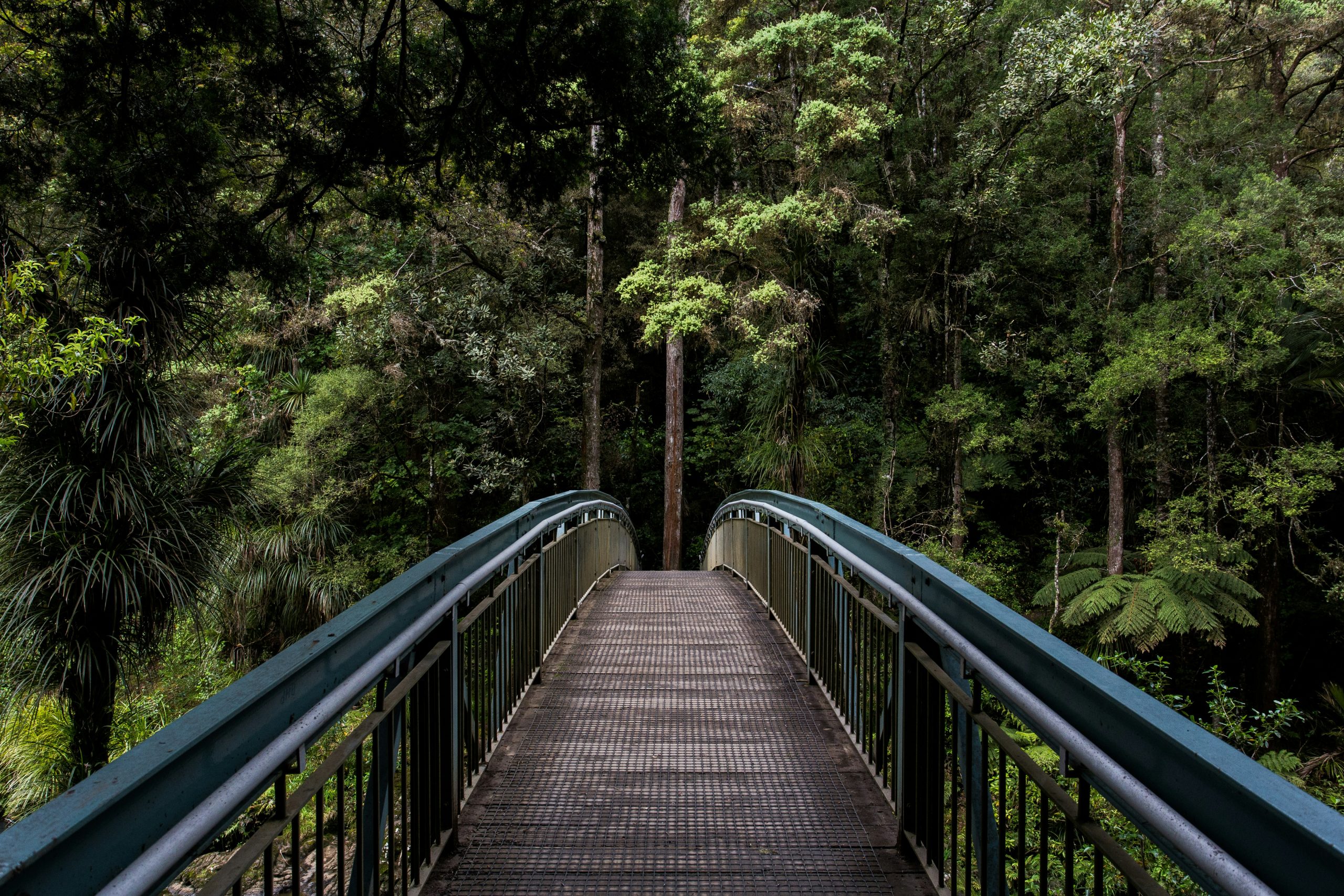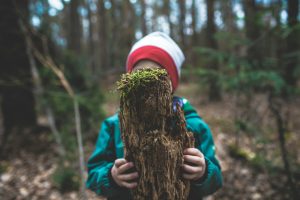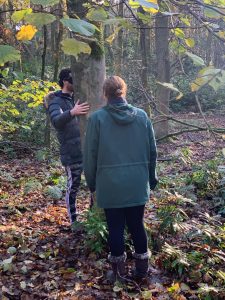
June 13, 2024, by Rupert Knight
Getting them out there: the importance of fieldwork in Geography and getting students in the zone to notice
In this post, Alex Booth and Mal Kerr make the case for the importance of fieldwork in geography and offer some guiding principles.
“Geography wants to take children outside the school and into the streets and fields; it wants to take the keyboard tappers out of their gloomy offices and into the rain or sunshine.” (Bonnett, 2008: 80).
As geography specialists, we wholeheartedly agree with the above statement. Fieldwork is a key cornerstone of a high quality, empowering and enriching geography education. Acting as a ‘defining feature of geography’ (Rawlings Smith & Otto, 2023: 53), we believe that fieldwork should be embedded within the geography curriculum across KS1 and 2. Our hope is to sell you this ambition! To do so, this post is split into two main sections, which aim to:
1. convince you of the importance of geography, through introducing some of the numerous purposes that fieldwork serves.
2. introduce a framework around which local, small-scale and exploratory fieldwork can be undertaken by schools.
Making a case for fieldwork through considering its numerous purposes
Perhaps most significantly, taking students outside of the classroom acts as a vital tool to help bridge the classroom/real-world learning divide (Moon, 2004). In other words, fieldwork can inspire a sense of wonder and allow students to see, touch and feel the concepts that they may otherwise only learn about in an often sterile, classroom environment.
We would be the first to admit that it can be challenging to teach students about how rivers shape the landscape through processes such as weathering and erosion. After all, these are abstract concepts that require students to ‘hold’ a lot of ideas in their heads (Rawlings Smith & Otto, 2023). Taking students out of the classroom, however, can provide these concrete experiences and make these hard to grasp ideas real. They can see how erosion has shaped that river meander and caused the riverbank to collapse. They may look at that river—possibly one that they may walk past every day—in a different light. Fieldwork makes an abstract concept graspable and relevant, whilst changing the student’s very perspective of the world around them.
What becomes apparent from this short ‘plug’ is that fieldwork can have many impacts on a student’s education. We would encourage you to step back and consider these varied impacts when thinking about your own fieldwork planning. To aid you with this, Kinder (2018) outlined the multiple educational purposes that fieldwork serves. This has been summarised below.
Broad educational purposes:
-
Conceptual: Develop knowledge and understanding of geographical processes, landforms, issues
-
Skills-related: Develop data collection, presentation and analytical skills.
-
Aesthetic: Develop more sensitivity and appreciation of the world around you. Promotes creativity and motivation.
-
Values-related: Develop empathy with others and care for the world around you. Become active citizens.
-
Social and personal development: Develop ‘soft’ skills such as critical thinking, decision making, team work.

Do take the time to have a look at Kinder’s ideas above and consider the following questions:
-
Which purposes resonate most strongly with you?
-
Which hadn’t you considered?
-
Which are the most common when thinking about school fieldwork?
In addition to acting as a useful starting point to consider the various impacts of fieldwork, the above summary can help more clearly express, to both you and others in your school, the importance of fieldwork, and make a strong case for its inclusion in the curriculum. It becomes clearer to articulate, for instance, that providing some of the most enduring memories of many students’ times at school can lead to ‘social and personal development’.
Similarly, allowing students to grapple with real-life data and information and use this in the classroom is significant to broaden ‘conceptual’ understanding and ‘skills-related’ competence. If you are thinking of introducing, or tweaking, your existing fieldwork offerings, we would encourage you to start thinking about the purposes of your fieldwork—which are broad and varied- and using these to help frame your fieldwork offerings.
Overcoming the fieldwork barriers

However, despite the recognised benefits of fieldwork, there remain hurdles to its widespread adoption in schools. This is by no means an isolated issue. In exploring why this might be the case, Rawlings Smith & Kinder (2022) identified common ‘fieldwork barriers’. We wonder how many of the barriers listed below apply to you?
-
cost,
-
staffing disruption
-
staff wellbeing
-
Planning
-
overcoming red tape.
There is a real opportunity, however, to utilise local, everyday, fieldwork as a means to minimise these challenges (Rawlings Smith & Otto, 2023). Fieldwork needn’t take a whole day and take place in a far-flung location. It can be just as impactful over an hour around the school site, or in taking students around the immediate area of the school for a morning or afternoon. You may be worried that such local, everyday fieldwork is less impactful. In the following section, we aim to show that there is just as much impact in these small-scale, everyday experiences. Specifically, we propose that utilising an enquiry approach (Roberts, 2003) can be a useful skeleton to build your fieldwork around.
The enquiry approach.

What is the enquiry approach?
Spearheaded through work such as Roberts (2003), the enquiry approach contains four major steps:
1) ‘hooking’ students’ interests around a lesson theme.
2) taking them out to notice
3) allowing students to make sense of this theme
4) allowing them to reflect on it.
These steps are illustrated in a handy diagram produced by Roberts. Do have a look!
With respects to fieldwork, the Geography National Curriculum at Key Stages 1 and 2 refers to enquiry—in terms of getting the students outside—as ‘Geographical Skills & fieldwork’. Here is what they have to say about this area of the curriculum at KS1 and 2:
-
KS1: use simple fieldwork and observational skills to study the geography of their school and its grounds and the key human and physical features of its surrounding environment.
-
KS2: use fieldwork to observe, measure, record and present the human and physical features in the local area using a range of methods, including sketch maps, plans and graphs, and digital technologies.
The focus of this part of the blog is to consider stages 1 and 2 of the above model. More specifically, it seeks to answer the following two questions:
1. How can the enquiry approach be used to stimulate student interest?
2. How can this interest be explored in the field, considering the varied purposes of fieldwork?
Question 1: Creating a need to know.
Step 1 is flagged by Margaret Roberts as creating ‘The need to know’. Put simply, this is another way of saying that the teacher creates an environment of interest and intrigue that should lead to questioning and consideration—stimulating their interest. There are many ways to achieve this.
In geography, the focus of learning is best established as a question (or series of questions), often around a stimulus material. These stimuli could be a photograph, a snippet from YouTube, personal anecdote, literary extracts, music, maps artefacts, food and drink, everyday objects or careful use of social media. Considered choice of questions, perhaps shaped around the ‘4Ws’, and the ‘H’ (how) can provoke speculation and spark curiosity amongst the students.
Once the imagination has been stimulated, and some initial thinking put in place, the next stage is to prepare students to gather information to respond to the questions they had identified (obviously with considered teacher guidance!)
In this way, fieldwork becomes a collaborative experience. In helping devise the questions, students shoulder some responsibility for their own learning. Through this increased ownership, they begin to develop a broader awareness of the power of fieldwork, stretching their creativity, empathy and becoming more in-tune with the geography that underpins the investigation. In other words, creating a need to know can be a handy way to broaden the impacts of fieldwork, as outlined in Section 1, all whilst stimulating students’ interests.
Question 2: Getting students out there.
If done well, before students even leave the classroom you should have fostered a strong, collaborative ‘need to know’. Step 2 of the enquiry approach takes place outside of the classroom. It seeks to explore the need to know by thinking about what data can be collected to help answer the questions that you and students have co-created. We are going to assume that you have some idea of traditional data collection techniques. If not, websites such as the GA, RGS and FSC have some fantastic resources to help.
What we would like to focus on here is the, often overlooked, importance of getting students ‘noticing’. A major barrier to effective enquiry outside is getting students tuned in and in ‘the zone’. This is where the ideas of Sharon Witt and Anthony Barlow come into play…. literally! In their Autumn 2014 piece, they advocated the importance of ‘Go, be playful’ to develop primary school students’ engagement with the world around them.

In the spirit of this, Table 1, below, gives some ideas that we have tried with our PGCE students in the field. The intention here is to present some sensory tools that you could utilise to get students to zone into their surroundings, isolating some senses and focusing on others. Not only does this approach, again, broaden the purposes of fieldwork—letting students tune in to their surroundings and develop a broader appreciation of the world around them—but also prepares students to collect more meaningful data to analyse back in the classroom.
| Learning activities | Method notes | Broader educational purpose (links to Table 1) | Links to KS1/2 |
| 1. Tree hugging | Students work in 2’s or 3’s. One student is blindfolded, spun around a few times to disorientate them and, from this starting point, is guided by the others in the group to a tree of their choosing. They are not allowed to touch the blindfolded student and must guide them by voice alone. Once taken to a tree, the blindfolded student must become familiar with the touch and feel of the tree (hence the hugging) before the blindfolded student is guided back to their starting point. The blindfold is removed, and the student simply must figure out which tree they were guided to by the others in the group. Best done in a woodland with a reasonably flat surface. | Values-related (developing empathy with others), social and personal development (developing team-work and decision making. |
KS1 use simple observational skills.
KS2 developing place knowledge of a site Students become more aware of their immediate space and become more comfortable with it |
| 2. guided visualisation walks | In a circle facing inwards initially, then outwards, get the students to focus on their breathing, balance and get themselves centred. Then, with eyes closed, talk them through the walk to get to where they are in the woods, focusing on any experiences on the way – slips, ducking under branches, walking down steps, breathing deeply as waling uphill etc. Then ask them to retrace their steps in their own minds in their own pace. Another option is to allow students to take their own favourite walk, getting them to paint a mental picture their own walk. | Aesthetic- (developing sensitivity to the environment)
|
|
| 3. listening | After the walk, a good thing to do is to use listening (eyes closed helped). Get students to notice the soundscape around them– birds, trees resulting, water flowing, chainsaws working, even a road. Try to spend at least 5 minutes on this, then have a discussion afterwards on what each student picked up on. |
Table 1: Sensory-led fieldwork techniques to get students noticing.
If you are feeling particularly brave, you could build on the above techniques and turn them into more structured data collection episodes. Perhaps students could devise their own ‘sensory maps’, for instance, where they annotate maps of the areas indicating where they would use different senses to notice aspects of the environment?
This can foster questions such as why they chose different locations and how they selected them. In this way, students can begin to make sense of the world around them in a more robust, geographically minded manner and touch on stages 3 and 4 of the enquiry approach outlined above. However, even if you do not choose to develop these sensory journeys, next time you take students out of the classroom try to consider starting the fieldwork by building in opportunities to get them to ‘notice’ by tapping into to one, or more, of the students’ senses. You might be surprised with what you find out!

Summary
We have attempted to achieve two aims with this post. Firstly, to impress upon you that fieldwork does not have to follow a particular route. There are multiple purposes that have very real and meaningful impacts on students’ educations. Secondly, effective outdoors learning can utilise an enquiry approach to provide richer, more meaningful experiences for students.
At its most basic, this involves helping students to ask engaging and interesting questions and provide opportunities for students to tune into their senses to notice the world around them. All of this can help enrich the fieldwork students undertake and make them invaluable experiences for the students. We hope this has given you some food for thought and gives you a little bit of a nudge to go and get out there!
To get you thinking, do take a moment to consider the following:
-
Which fieldwork purposes summarised here does my existing fieldwork promote?
-
Are there alternative purposes that my fieldwork could promote?
-
How could I introduce my fieldwork in a way that creates a healthy ‘need to know’?
-
How could I adapt my fieldwork to promote their senses and allow students to notice the world around them?
References:
Bonnett, A. (2008). What is Geography? Sage.
Freeland, I. (2021, May 11). Geography in outstanding primary schools. https://educationinspection.blog.gov.uk/2021/05/11/geography-in-outstanding-primary-schools/
Kinder, A. (2018). Acquiring geographical knowledge and understanding through fieldwork. Teaching Geography, 43(3), 109–112.
Moon, J. A. (2004). A Handbook of Reflective and Experiential Learning: Theory and Practice. Routledge. https://doi.org/10.4324/9780203416150
Rawlings Smith, E., & Kinder, A. (2022). The professional needs and views of teachers of geography: A national research report by the Geographical Association (p. 16). The Geographical Association. https://geography.org.uk/wp-content/uploads/2023/02/GA_National_Research_Report_2023.pdf
Rawlings Smith, E., & Otto, K. (2023). Encountering the Everyday: Place-writing during geography fieldwork. In E. Rawlings Smith & S. Pike (Eds.), Encountering Ideas of Place in Education: Shcolarship and Practice in Place-based learning. Routledge.
Roberts, M. (2003). Learning Through Enquiry: Making Sense of the Key Stage 3 Classroom. Geographical Association.
Witt, S. & Barlow, A. (2014). Joy of the little journeys Primary Geography 85, 30pp.
No comments yet, fill out a comment to be the first

Leave a Reply